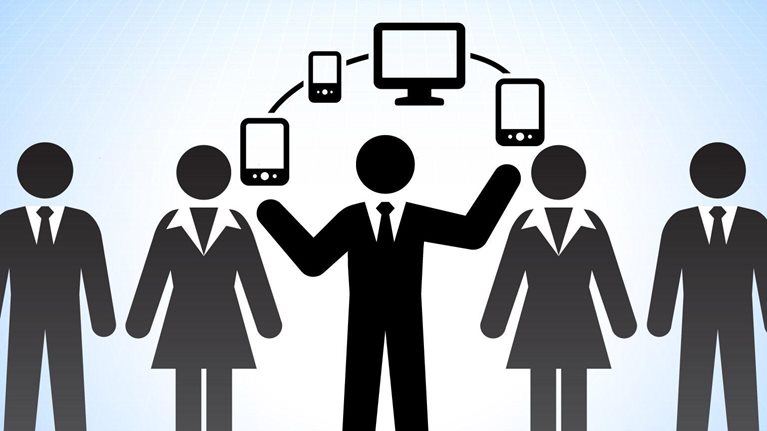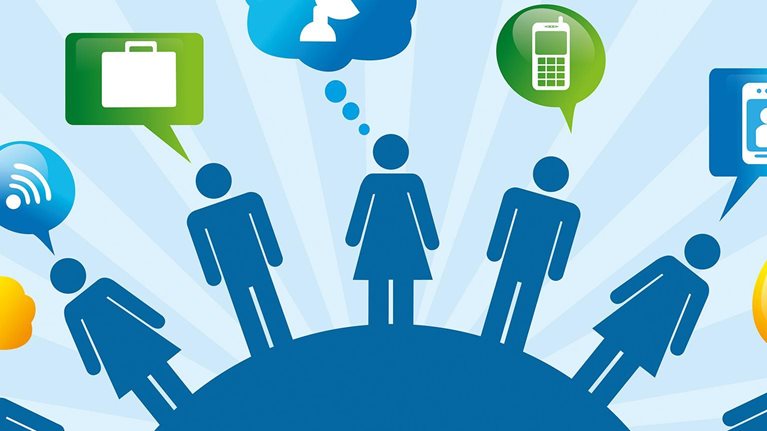In the latest episode of our Discussions on Digital podcast, the head of McKinsey’s consumer digital-excellence initiative, Brian Gregg, talks with several Silicon Valley leaders about marketers’ thinking on how best to spend their budgets. Nicolas Franchet, global head of vertical strategy at Facebook; Rebecca Wahl, director of global sales operations at Google; and Dianne Esber, associate principal at McKinsey focused on marketing, sales, and digital, gather around a San Francisco dinner table to discuss the return on investment of digital advertising and marketing. The specific topic for the evening: how much of the marketing budget should go to digital, and what portion of figuring that out is art, science, or craft.
Figuring out where to put your marketing dollars
Nicolas Franchet, global head of vertical strategy, Facebook: I spend a lot of my time looking at how people consume information. In the US, people spend 12 hours a day consuming media. About 50 percent of that is in a digital format—half mobile, half nonmobile. Four years ago, there was zero mobile. It’s an incredible opportunity for marketers to try new things, but it also underscores how important it is that we figure out how much of the marketing budget allocation is art and how much is science.
Rebecca Wahl, director, global sales operations, Google: Everyone is evolving from last-click attribution as the only way of looking at budget allocation. People are saying that many touchpoints along the customer journey play a role, they just haven’t yet figured out how much to allocate to each one. They’re experimenting, trying to figure out what the attribution model should look like.
Dianne Esber, associate principal, McKinsey: Companies tell us they know last click is dead and last click is over. But when we surveyed a bunch of CPG and retail companies and asked, “What attribution method are you using?” 75 percent or more were still using last click. And out of the remainder, about 15 to 20 percent didn’t have a robust attribution model at all. So no one’s really solved this.
I was speaking with a young data scientist the other day. He said, “Last-click attribution is kind of like ‘friends with benefits.’ It’s a short-term solution to a long-term problem.” He said he wouldn’t bring last-click attribution home to meet his mom. I had to laugh.
Nicolas Franchet: One of the things you can do on Facebook today to help brands build awareness and consideration is what we’re calling sequencing. You can show a video to your target audience, and then you can automatically retarget the people who viewed the video with a call to action on the given product, all in one integrated campaign. This takes somebody through the customer journey at a faster pace than ever before.
Millennials and authenticity
Brian Gregg, head of McKinsey’s consumer digital-excellence initiative: In three years, the millennial is going to be the highest-spending consumer in the US. Yet only 1 percent of millennials surveyed said that a compelling advertisement would make them trust a brand, while 43 percent of millennials rank authenticity over content when consuming news. So whether or not millennials consider a brand authentic determines whether or not they’re going to trust it. How does a marketing team think about that in a Google and Facebook world?
Rebecca Wahl: TV-watching is declining the most in the millennial segment. And millennials are also, by far, spending much more time online and on their phones than the average consumer. As a result, we marketers have to find a way to converge brand and performance, because straight traditional TV advertising is not well trusted in that segment. It’s just not the most effective medium. And that is where you’re starting to see convergence and differentiation on how you need to talk about your brand and what advertising really means.
Just look at what’s happening in the beauty space on YouTube. Millennials especially don’t want to be told how this one brand is amazing and makes your hair look amazing—and they certainly don’t want to be told it in an advertising format. But they do a lot of looking and love to see channels with people in their age demographic doing “how to” videos that might be sponsored by the brand.
People are now browsing and doing their exploratory work with search, and so we’re seeing a lot of big branders are now actually using search for branding. Because it actually helps build awareness, in addition to building conversion.
Nicolas Franchet: At Facebook, we talk about the spectrum of intent. When you’re doing a query on Google, for example, you have high intent. So, arguably, the advertising you’re receiving is highly relevant because it’s in response to your intent. Similarly, on Facebook, the most sophisticated advertisers are using a lot of signals on who you are, where you live, and maybe your interests and perceived connection to the brand to serve you relevant messages.
So think of it more as value-added content as you’re consuming your information. Everyone is talking about programmatic buying. We are talking about having more data to create more relevance, and to be both more targeted and more efficient with your spend. This is the nirvana people are trying to get to. But if you look at almost any of the dozens of surveys out there, you know that up to 75 percent of CMOs don’t know how to execute that, or even what it would take. The organization just isn’t yet capable of doing it. Technology is ahead of organization.
The double standard of measurement
Brian Gregg: I think a lot of marketing organizations are struggling with the battle between short-term and long-term impact, especially with their digital spend. McKinsey research showed that 10 to 30 percent of total sales were on the short-term impact. That leaves 70 percent going toward the longer-term impact of advertising spend. How would you advise marketers to think about short- versus long-term impact?
Rebecca Wahl: Measurement in the traditional sense has been quite expensive. But companies recognize how important it is to be able to measure, and people are getting better and scrappier about using more tools. Both Google and Facebook are building more online measurement tools to make that happen. So things like brand-lift studies and surveys are much cheaper and easier to administer.
To be honest, I think we’re still in the beginning phases. If digital is in phase two, I think measurement is in phase one in terms of what we have available and how we’re using it.
Consider that digital marketing is still 15, 20, 30 percent max of the total budget. We are arguing on the margin about what you can measure in digital. We can measure things much better than we used to and with a lot more science. But in digital, it’s never good enough. Compare this with print marketing. The fact that I can’t tell what’s going on there is totally fine. The juxtaposition between those two is always, to me, quite comical. I’m not surprised CFOs are still frustrated.
Nicolas Franchet: Five years ago, the only way you could advertise a product in a push way to a million people in America was to work with one of the top Madison Avenue ad agencies and have them make a buy on their top channel, for a top program. That was planned months in advance, and it was going to cost you a fortune. Fast forward to today. You and I can do this from our laptops right here, right now, at the touch of a button, for a few dollars. That is the big change.
The increasingly important role of the agency
Brian Gregg: The agency continues to have a powerful influence on marketing spend. But is it the same role that it used to be, just with a digital orientation? Or is it a different role?
Rebecca Wahl: As Nicolas said, technology and what we can do with it are accelerating faster than organizations can keep up. The expectation around what agencies can provide is going to be heightened. They will need to be able to be more focused on data drive-bys and have capabilities on social search and digital video, et cetera. “Programmatic” is a loaded word. But getting that done is going to make all but the very largest advertisers reliant on agencies.
We’ve started to see agencies rapidly evolving their capability set. And the investment that I certainly see Google making, and that I’m sure Facebook is making, is helping to educate those partners to help them be in a place where they can do what we need them to do.
The need for speed
Brian Gregg: A lot of our audience is interested in the challenges of becoming faster, especially those companies that have been around for a while. What sort of advice might you have for organizations trying to get there to move more quickly?
Rebecca Wahl: Some of it is mind-sets and behaviors expectation, and that is driven by the CMO and the organization. You are already seeing people start to have different expectations. For example, people expect digital turnaround times of 24 hours to see statistics. But I think people also have to think about measurement and organization differently. For example, we’ve started to see customers do much more “war room” type of concepts for large online campaigns, where they can watch how a campaign is progressing over the course of hours. We can actually see real-time data. We can actually see more hourly daily data.
That begs the question of whether we can make rapid iterations in response to what we see. But it’s not a construct people normally have. They have to pull a team together. They need to have a digital partner to be able to make that happen. I’m not saying it’s pervasive, but I do think that as people are starting to think about things differently, they are also starting to think about how they need to operate differently.
Must-have marketing capabilities
Brian Gregg: Looking three to five years out, what skills are marketing teams lacking today that they sorely need in order to do what they need to do?
Rebecca Wahl: I think the data-scientist skill set is still in short supply. It exists in pockets. And what’s funny to me is that this role might have already existed in a traditional marketing organization, but the people sat somewhere in a dark corner and were ignored because they weren’t considered creatives.
Brand management is now really front and center of the conversation. Being able to do the kind of analytics that are available and now required in order to be excellent is just not a skill set that we have a ton of. The other piece that’s missing is related to partnership with the agency and the need for higher volume of content and different kinds of content—content that has to look quite different. Form and format now need to vary quite a bit. You have to think about how you can actually build more and smaller pieces. Rapid iteration of content is another capability that doesn’t seem to be as evolved as it could be across both the advertiser and the agency landscape.
Nicolas Franchet: Last week I was in Paris, and we organized a roundtable with probably the eight most advanced young women who run Facebook for their start-ups in Paris. It was a fascinating three- to four-hour exchange. They’re very young. This may be their second job. They’re very quantitative. And they didn’t even know other people like them existed. So it was a little bit like Robinson Crusoe meeting Friday. It’s like, “Oh my God, you do this too!” It was awesome to watch them. They’re doing photography targeting, analytics, iteration. All of it.
Dianne Esber: The question that Brian and I get asked all the time by every client is, “I need more people like that. How do I hire them?”
Nicolas Franchet: The reality is you have to train them, right? They don’t exist. It’s a new skill set. There are new platforms. Even in search, which has been around for ten years, it’s still a hard skill set to find. For the traditional enterprise, you want to start retraining your people.
Rebecca Wahl: I agree. I’ve heard this even from companies who actually have more of a bench than others. They cannot find the skill set. And I think the reality is, as Nicolas said, it doesn’t exist. I mean even the example you used from Paris, the women are all quite young. It’s their second, maybe third job. Which means they’re largely self-taught, and they grew up in this world, and they had to learn and adapt and build that capability over time, in conjunction with their agency and with their digital partners. And I think that’s the reality, and people have to start to be more comfortable with that.


